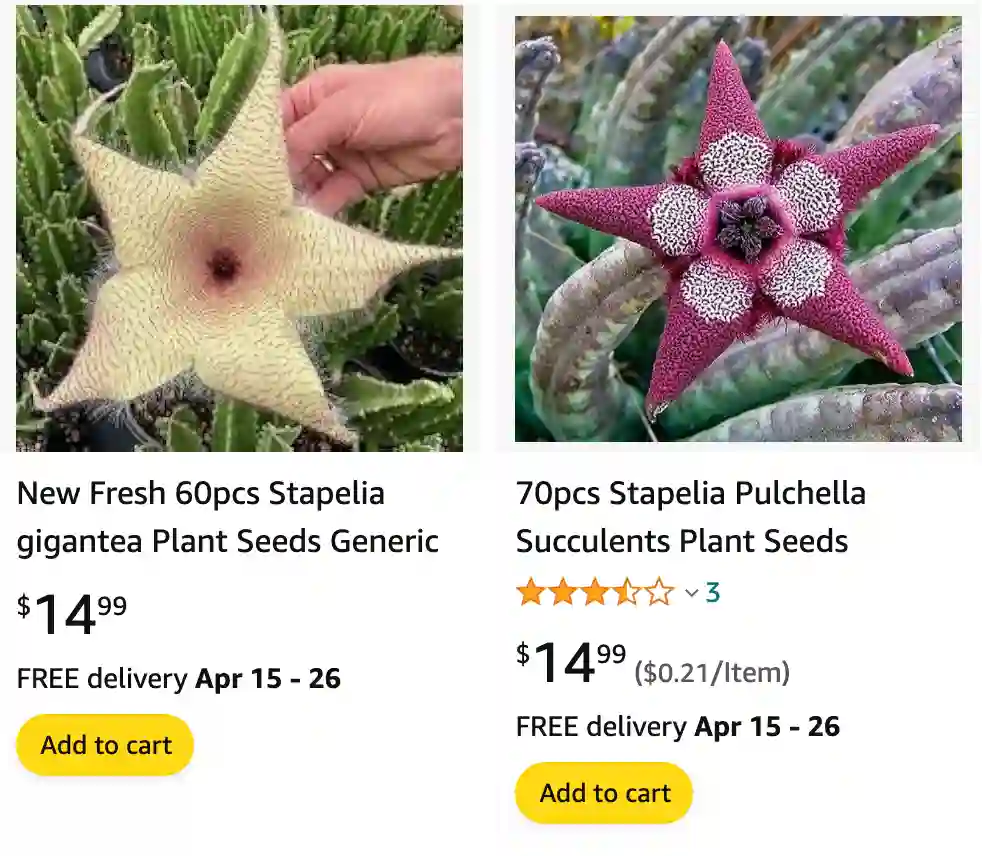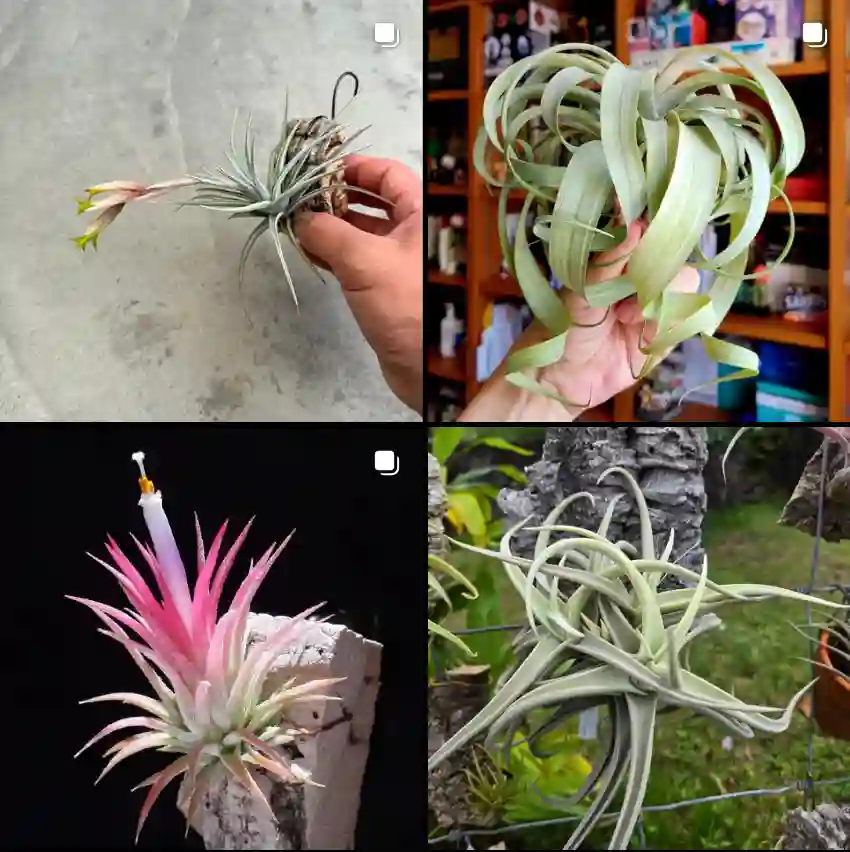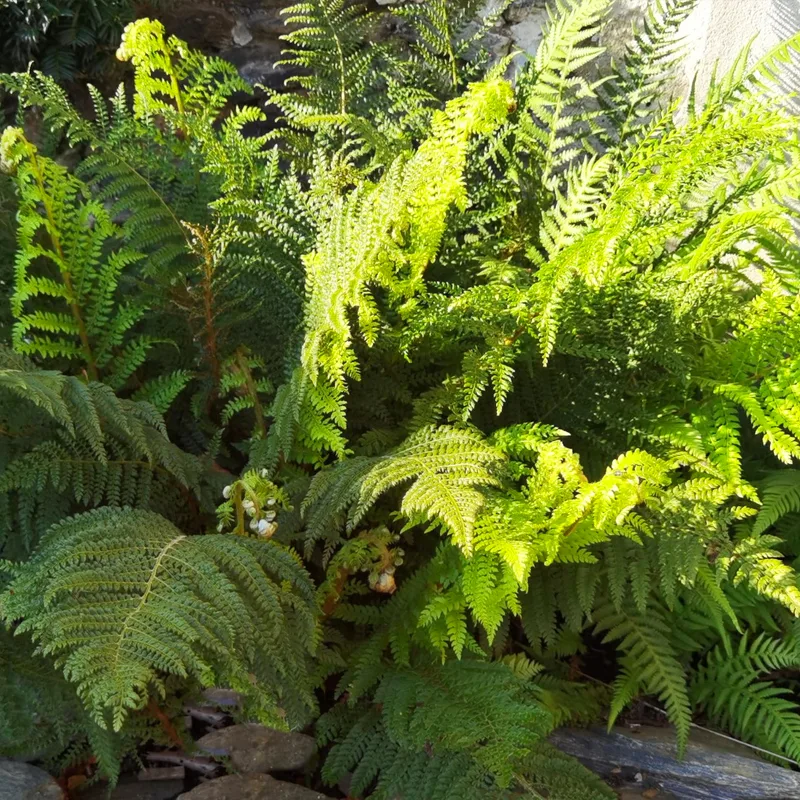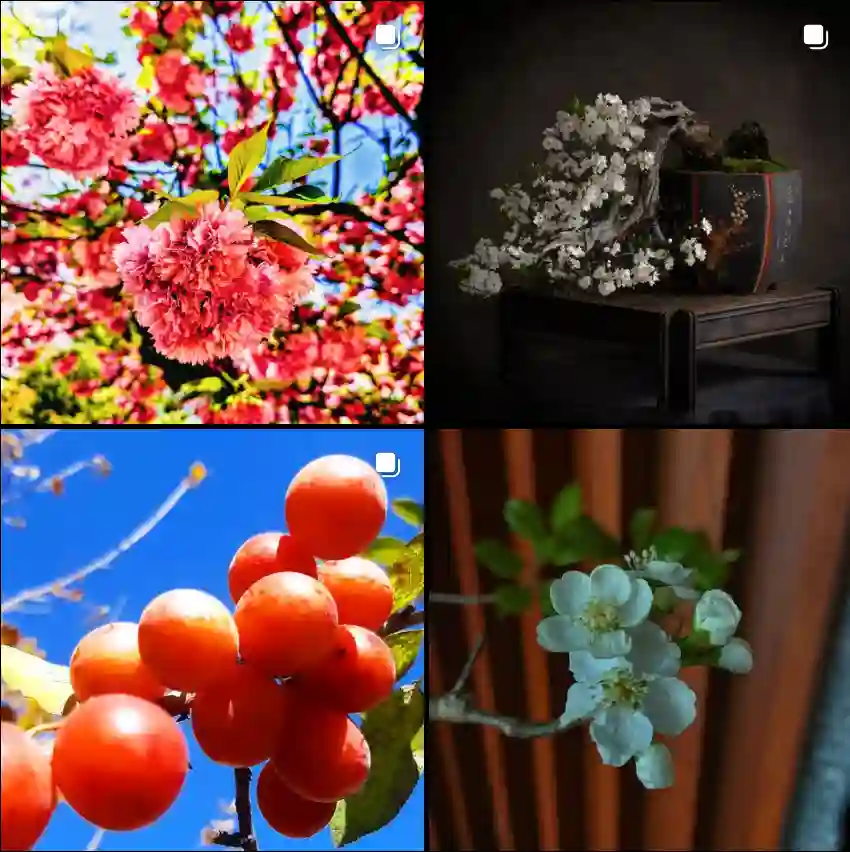
Stapelia Gigantea vs Grandiflora
I’ve grown both Stapelia Gigantea and Grandiflora, and I find Gigantea’s larger flowers incredibly captivating—they look like intricate star-shaped wonders. Grandiflora, though smaller, surprises with its intricate patterns and a slight resemblance to a starburst. Both are fascinating, but Gigantea steals the show in sheer spectacle.
32 Species in Genus Stapelia
How to care for Stapelia gigantea?
Here’s a guide on how to care for Stapelia gigantea, also known as the Zulu Giant:
Sunlight:
- Warmth and Bright, Indirect Light: Stapelia gigantea thrives in warm temperatures and bright, indirect sunlight. This provides the necessary light for growth without the risk of sunburn. South-facing windows with sheer curtains or east-facing windows can be suitable locations. Avoid harsh midday sun, especially during hot summer months.
Watering:
- Water Thoroughly, Then Allow to Dry Completely: Stapelia gigantea, like most succulents, requires a well-draining soil mix and infrequent watering. The key is to water deeply when the soil is completely dry, then allow it to dry out completely again before watering. Overwatering is a major threat to this plant, so err on the side of underwatering.
- Signs of Thirst: Wilting or wrinkled stems are signs that your Stapelia gigantea is thirsty. However, it can tolerate some wrinkling without permanent damage.
Soil:
- Excellent Drainage is Crucial: Use a well-draining cactus or succulent potting mix specifically formulated for these plants. This allows excess water to drain quickly and prevents root rot. You can also create your own mix by combining potting soil with perlite, sand, or grit in a ratio of 1:1:1:1 for optimal drainage.
Fertilizing:
- Light Feeder: Stapelia gigantea doesn’t require frequent feeding. A diluted dose of cactus fertilizer once a year during the growing season (spring or summer) is sufficient. Avoid over-fertilizing, as it can damage the roots.
Temperature:
- Warm Temperatures Preferred: Stapelia gigantea prefers warm temperatures between 70°F and 95°F (18°C and 35°C). Avoid exposing it to cold drafts or temperatures below 50°F (10°C). If planted outdoors in colder climates, bring it indoors before the first frost.
Humidity:
- Adaptable to Average Humidity: Stapelia gigantea doesn’t have specific humidity needs. It can tolerate average household humidity levels. However, if the air is very dry, you can occasionally mist the plant with water (avoiding the flowers) to provide some extra moisture.
Flowering:
- Unique Star-Shaped Flowers: Stapelia gigantea is known for its unusual, star-shaped flowers that have a strong, unpleasant odor resembling rotting flesh. This odor attracts pollinators like carrion flies, which help with seed production.
- Improve Airflow During Flowering: While the flowers are interesting, the odor can be unpleasant. To minimize the odor indoors, improve air circulation around the plant during flowering by opening windows or using a fan.
Additional Tips:
- Repotting: Repot your Stapelia gigantea every 2-3 years or when the plant outgrows its current pot. Choose a pot with drainage holes that’s slightly larger than the root ball.
- Pests and Diseases: Generally resistant to pests and diseases, but watch for common succulent problems like mealybugs or scale insects. You can treat them with insecticidal soap or neem oil if necessary.
- Dormancy: During winter, Stapelia gigantea may enter a dormant period. Reduce watering frequency even further during this time.
How to propagate Stapelia gigantea?
Propagating Stapelia gigantea turned out to be easier than I thought. I usually do it by taking stem cuttings. I make a clean cut on a healthy stem and let it dry out for a few days until a callus forms over the cut. This helps prevent rot when I plant it. Once it’s ready, I stick it into a pot with the same well-draining cactus mix I use for the parent plant. I keep the soil lightly moist until I see new growth, which indicates the cutting has rooted. This method has worked well for me, and it’s gratifying to see new plants taking root and growing.
What pollinator is attracted to Stapelia gigantea?
Stapelia gigantea has a rather unique relationship with its pollinators. The plant produces large, star-shaped flowers that emit a strong odor reminiscent of rotting meat. While this smell isn’t pleasant to me, it’s incredibly effective at attracting its primary pollinators, which are carrion flies. These flies are drawn to the scent, thinking they’ve found a food source, and in the process, they end up pollinating the flowers. It’s a fascinating example of nature’s ingenuity, even if it means enduring a bit of a stinky bloom in my garden.
When does Stapelia gigantea bloom?
My Stapelia gigantea usually blooms in late summer to early fall. The anticipation builds as I watch the buds develop over several weeks. When the flowers finally open, they reveal their impressive size and intricate details. Despite the unpleasant odor, I find the blooming period to be one of the most exciting times because the flowers are so unusual and striking. It’s always a conversation starter with friends and family who visit and are curious about this unique plant in my collection.
If i die, water my plants!



